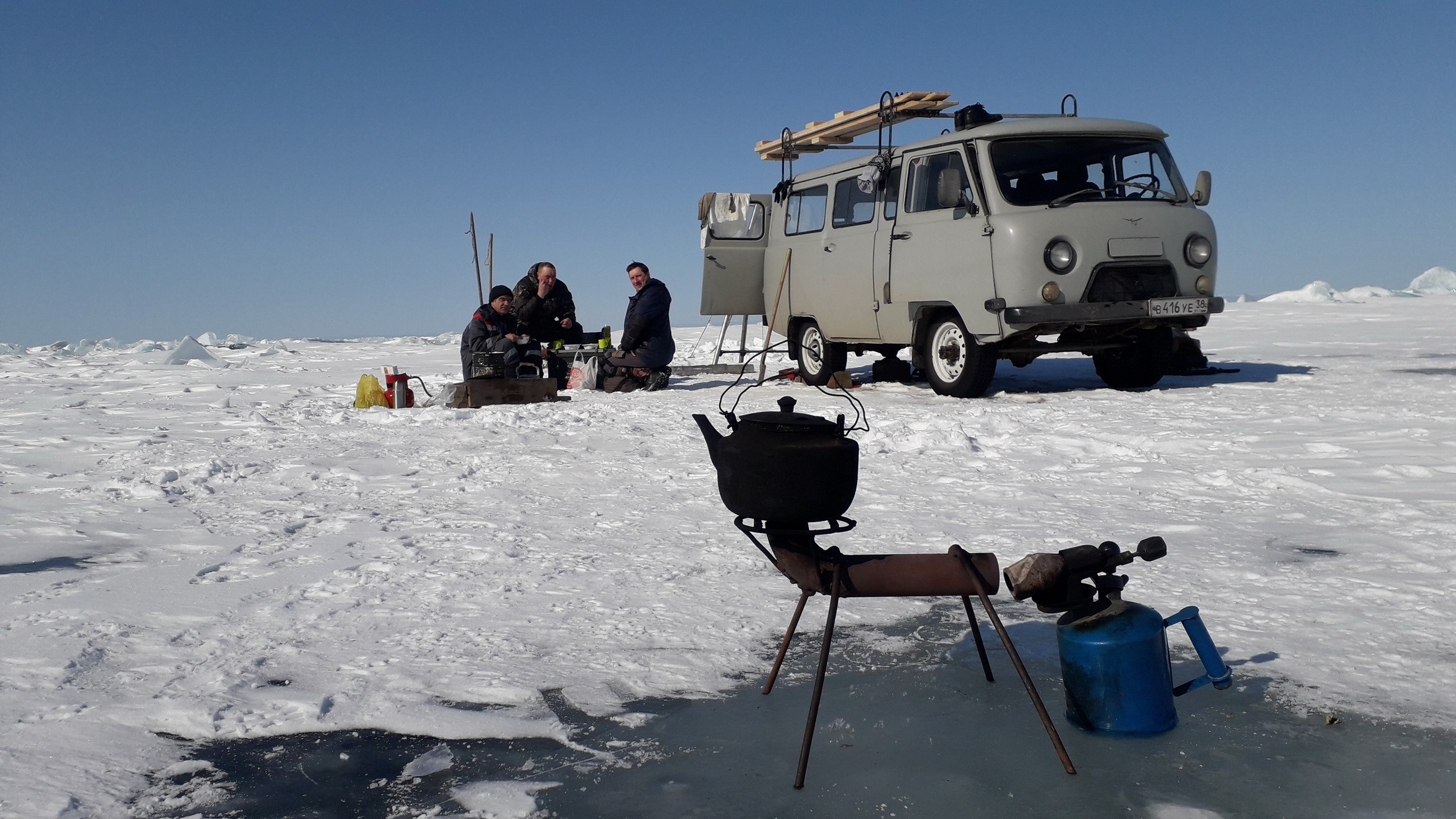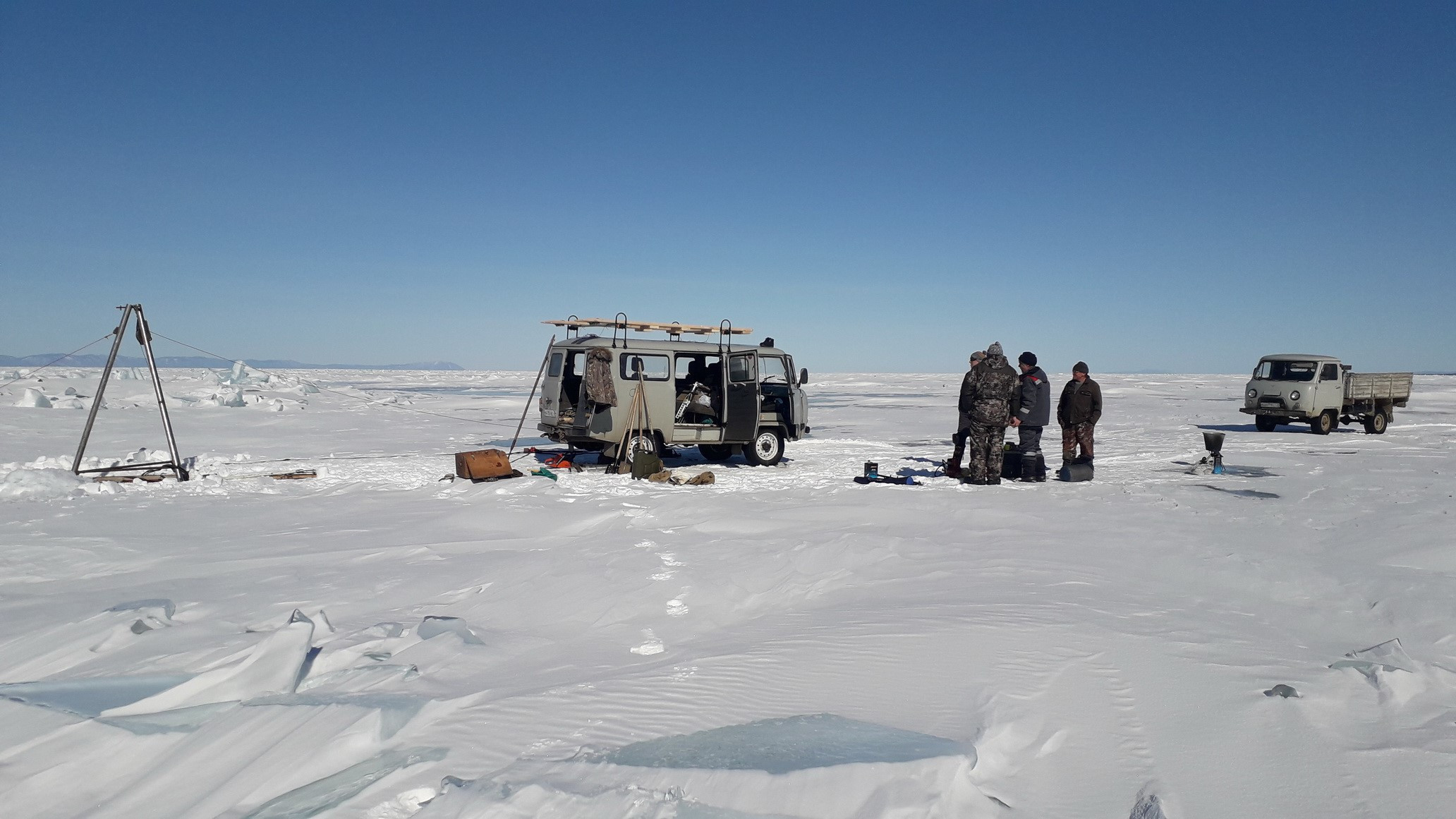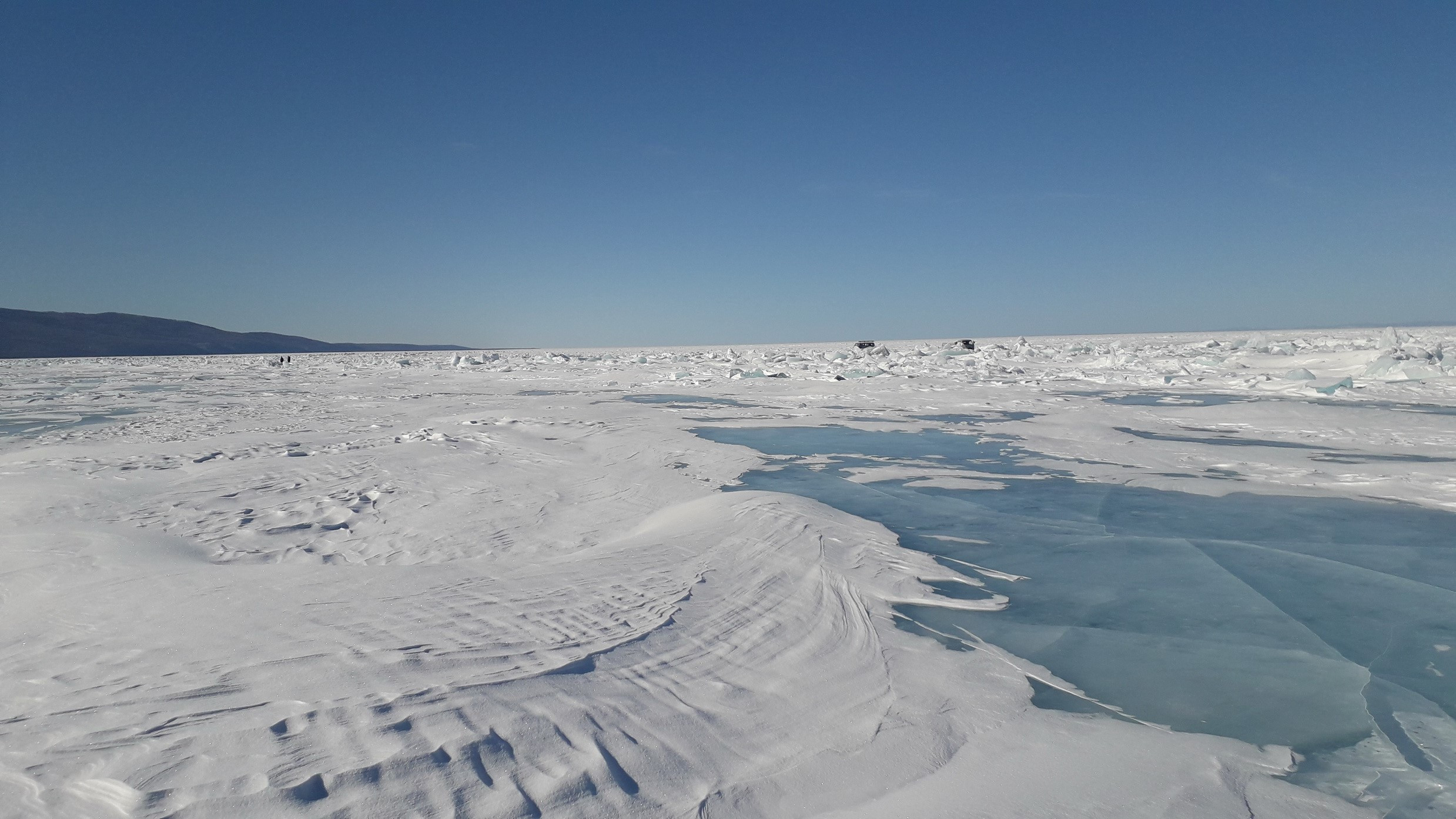Expedition on the ice in the central basin of Lake Baikal from 9 to 12 March 2021
The expedition within the framework of the programmes “Study of the Functioning of Hydrate, Petroleum and Gaseous Hydrocarbon Systems and Associated Microbial Communities in Lake Baikal” and “Ecological and Economic Assessment of the Functioning of Freshwater Biogeocenoses, Fundamental and Applied Aspects” was carried out on the ice in the central basin of Lake Baikal from 9 to 12 March 2021.
The aim of the expedition To continue the research of gas hydrates, mud volcanoes and methane seeps as well as to calculate the stability of gas hydrates and search for the traces of their decomposition and formation in the freshwater body.
Tasks: To clarify the depths near the Melkiy seep (Central Baikal) using different methods and measure near-bottom and bottom temperatures in the water and sediments of the lake.
Results: In the course of the two-day fieldworks on the ice of the lake, despite the complicated ice conditions and difficulties in transportation of the equipment to the study area (large fields of pressure ridges and deep snow), the planned measurements were carried out by different remote and direct methods at two sites of the Melkiy seep. Temperature and salinity were measured with CTD; echograms were obtained in the water column, the temperature of bottom sediments at different sub-bottom depths was measured; direct measurements of depth were carried out with a cable. Now, the data are processed and will be used for the subsequent monitoring of the area with bubble discharge and shallow (the upper limit of the gas-hydrate stability zone) accumulations of methane hydrates. This is necessary for solving problems of the search for the traces of decomposition and formation of gas hydrates resulted from changes in environmental conditions and clarifying hydrate stability models at the bottom of Lake Baikal.






